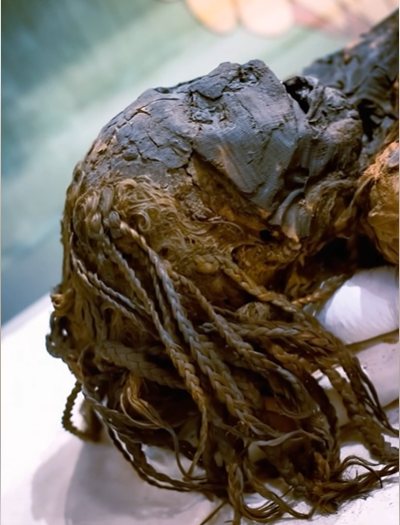Frozen Legacy of the Altai: The Mysterious Ice Maiden and Her Ancient World
Deep in the isolated Altai Mountains of Central Asia—stretching across southern Siberia and touching Mongolia, China, and Kazakhstan—lies a harsh, stunning wilderness. This landscape of icy peaks and sweeping plains was once home to the Pazyryk people, a nomadic warrior culture dating back to around 500 B.C.
Though they left behind no written history, the Pazyryk have revealed their story through extraordinary burial sites known as kurgans. These tombs, preserved in permafrost, offer rich insights into their beliefs and way of life.
A groundbreaking discovery occurred in 1993 when archaeologist Natalia Polosmak unearthed an untouched burial mound that had been frozen for 2,500 years. Inside a carved larch-wood coffin rested the well-preserved body of a young woman—approximately 25 years old—later dubbed the “Siberian Ice Maiden” or the “Princess of Ukok.” Her skin was so intact that the intricate tattoos on her arm and hand were still visible, including an image of a fantastical creature with a griffin’s beak, a deer’s head, and floral-tipped antlers.
Three decades later, the Ice Maiden and her burial artifacts continue to captivate historians eager to learn more about Pazyryk culture, art, and spirituality.
Tattoos, Textiles, and the Power of Ice
The mummy was discovered in an underground wooden chamber, covered by a rocky mound. By the time Polosmak’s team arrived at the Ukok Plateau, some stones had been displaced—likely by ancient grave robbers. Ironically, their disturbance may have led to the tomb’s exceptional preservation. According to Vassar College art historian Petya Andreeva, the looters inadvertently created an opening that allowed water to enter, freeze, and form a solid block of protective ice.
“It turned out to be a stroke of luck,” Andreeva noted. “The ice sealed the tomb and kept everything remarkably intact—some of the carpets look newer than ones in my home!”
This natural deep freeze preserved not only fabrics and artifacts but also the vivid tattoos on the Ice Maiden’s skin. While tattooing was common in many ancient societies, none have survived in such pristine condition.
Myths in Ink: The Symbolism of Animal Imagery
The Ice Maiden’s tattoos were created using soot and fine bone needles, following an artistic tradition known as “animal style.” Her body was adorned with mythical creatures formed by blending various animal features—like a hybrid of goat, leopard, and deer—or scenes where one creature morphs into another.
This style is seen across artifacts from other Central Asian nomadic groups. Nearly every item in the Ice Maiden’s tomb featured these hybrid figures, including an elaborate three-foot-tall headdress adorned with griffins. Even the six horses buried with her were equipped with masks, possibly symbolizing their transformation in the afterlife.
While such animal motifs are often linked to shamanistic beliefs, Andreeva suggests that they might also reflect psychological or environmental factors. The nomadic life was full of change, and these hybrid creatures could symbolize adaptability or the uncertainty of survival.
She adds that the region likely faced significant climate shifts during the Pazyryk era, which could have contributed to a sense of instability—both ecologically and socially. “Perhaps these zoomorphic figures were a way to cope with fear and reassert control over a volatile world,” she said.
Decoding the Identity of the Ice Maiden
What sets the Ice Maiden apart is the clear evidence of her elevated status. Unlike earlier female mummies—often believed to be concubines buried with noble men—she was interred alone and honored with the sacrifice of six horses. This suggests she belonged to the Pazyryk elite.
Scientific analysis shows she stood about 5’6”, was in her twenties, and may have died from breast cancer. Toward the end of her life, she became extremely frail, and her people likely transported her to her final resting place with great care—another sign of her importance.
She was buried in a silk blouse, surrounded by colorful cotton and linen textiles, and rugs featuring Persian designs. The presence of Chinese silk and Persian-style items hints at the Pazyryk’s far-reaching trade networks and cosmopolitan influences.
Some believe the Ice Maiden may have been a spiritual figure or shaman, though Andreeva remains cautious about labeling her as such. Modern Altai communities practice shamanism, but there’s limited evidence connecting those beliefs directly to ancient Pazyryk traditions.
Instead, Andreeva argues that the Ice Maiden’s burial reflects a dual image valued by her society. “On one hand, she embodies the ideal steppe warrior, as symbolized by the animal motifs,” she explains. “On the other, she represents a worldly, sophisticated figure who helped connect her people with the wider world.”



